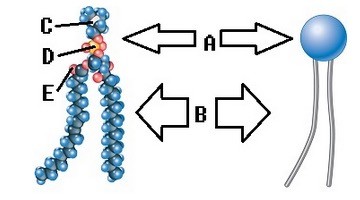A hypothetical genetic disease causes the body to produce antibodies that compete with acetylcholine for receptors on the motor end plate. Patients with this disease exhibit varying degrees of muscle weakness and flaccid paralysis in the affected
muscles. If you could administer a drug that inhibits acetylcholinesterase or a drug that blocks acetylcholine, which one would you use to alleviate these symptoms?
What will be an ideal response?
This is a case of competition between acetylcholine and the antibody. To make the patient's acetylcholine more effective, a drug that inhibits acetylcholinesterase would slow the breakdown of his acetylcholine, relieving some of the weakness. An acetylcholine blocker would be worse than doing nothing.
You might also like to view...
Many tiny ________ (interlobular) arteries branch from the ________ arteries, supplying blood to the renal cortex.
A. cortical radiate; arcuate B. arcuate; cortical radiate C. segmented; cortical radiate D. arcuate; segmented
What two major regulatory systems in the body have the most influence on the immune system?
a. circulatory and digestive b. circulatory and endocrine systems c. digestive and endocrine systems d. nervous and endocrine systems e. nervous and digestive systems
 Phospholipids are important components of the plasma membrane. What does "E" represent on the diagram?
Phospholipids are important components of the plasma membrane. What does "E" represent on the diagram?
A. Phosphorus B. Nonpolar (hydrophobic) region C. Nitrogen D. Oxygen E. Polar (hydrophilic) region
What type of section would separate (1 ) the two eyes? (2 ) the nose and two ears? (3 ) the neck and naval?
A) (1 ) sagittal (or mid-sagittal, if along midline); (2 ) transverse, or horizontal; (3 ) frontal B) (1 ) frontal; (2 ) sagittal (or mid-sagittal, if along midline); (3 ) transverse, or horizontal C) (1 ) frontal; (2 ) transverse, or horizontal; (3 ) sagittal (or mid-sagittal, if along midline) D) (1 ) transverse, or horizontal; (2 ) frontal; (3 ) sagittal (or mid-sagittal, if along midline) E) (1 ) sagittal (or mid-sagittal, if along midline); (2 ) frontal; (3 ) transverse, or horizontal